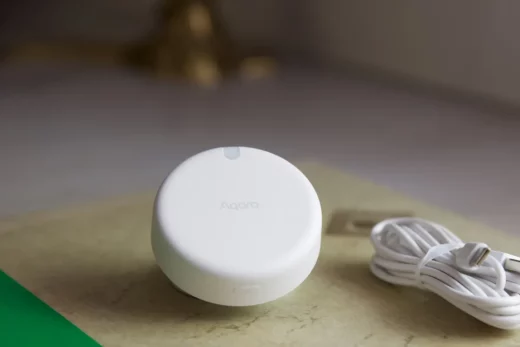
Aqara’s presence sensor can tell when you’re sleeping
The FP2 mmWave sensor is also getting AI-powered person detection. This could help it know when it’s you in the room and not a robot vacuum.
By Jennifer Pattison Tuohy, a smart home reviewer who’s been testing connected gadgets since 2013. Previously a writer for Wirecutter, Wired, and BBC Science Focus.
Dec 12, 2023

Aqara’s Presence Sensor FP2 can now be used as a sleep tracker. Photo by Jennifer Pattison Tuohy, The Verge
The innovative Aqara Presence Sensor FP2 that debuted at CES 2023 is getting three significant new features that could make it more useful and more effective as a smart home sensor.
Sleep Monitoring Mode, AI Person Detection, and People Counting are all coming to the Wi-Fi sensor, which is one of the first to use millimeter wave (mmWave) radar tech to accurately detect a person’s presence even when they’re sitting still, rather than relying on passive infrared motion sensing.
The small puck-shaped device can now be set to monitor and analyze “sleep status, real-time heart rate, and respiratory data,” according to a press release from the company. Sleep monitoring is available via a firmware update (V1.2.3_0002.0059) that’s rolling out globally over the next few days.
AI Person Detection and People Counting are enhancements that will arrive “in the coming months.” According to Aqara, AI Person Detection will use on-device AI to distinguish between human motion and motion caused by robot vacuums, pets, and other moving objects. People Counting will be able to send alerts when people enter a room as well as notify you how many people there are, which could be a useful security feature.
One of the big selling points of the FP2 is that, unlike traditional PIR motion sensors, mmWave radar can tell if you’re sitting, standing, or lying down and monitor motion in specific areas. This should make it possible to set up advanced automations, such as turning on a specific light when you sit down in a specific chair or opening the shades when you get out of bed in the morning.
This article first appeared at The Verge on December 12, 2023.
1 Comment





Very interesting product and technology. It could provide some useful benefits and of course can be enhanced on an ongoing basis. I am interested in investigating further.